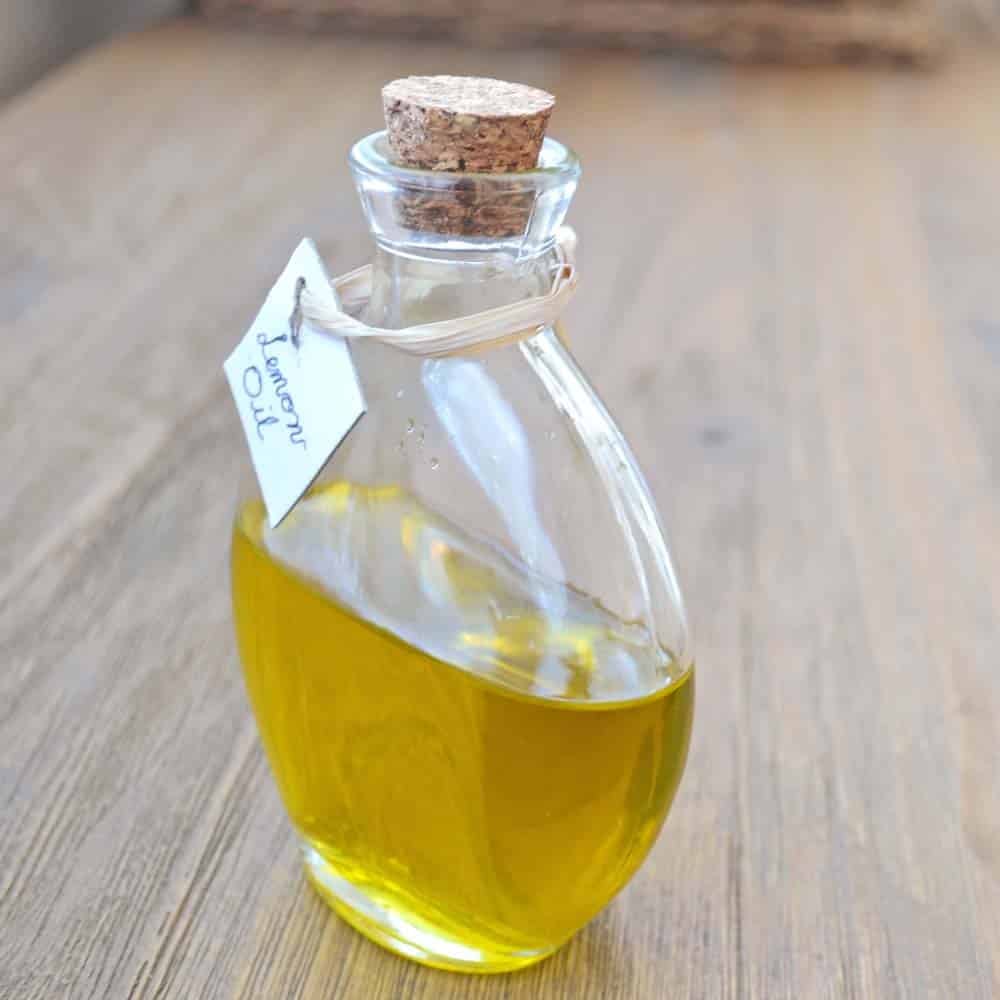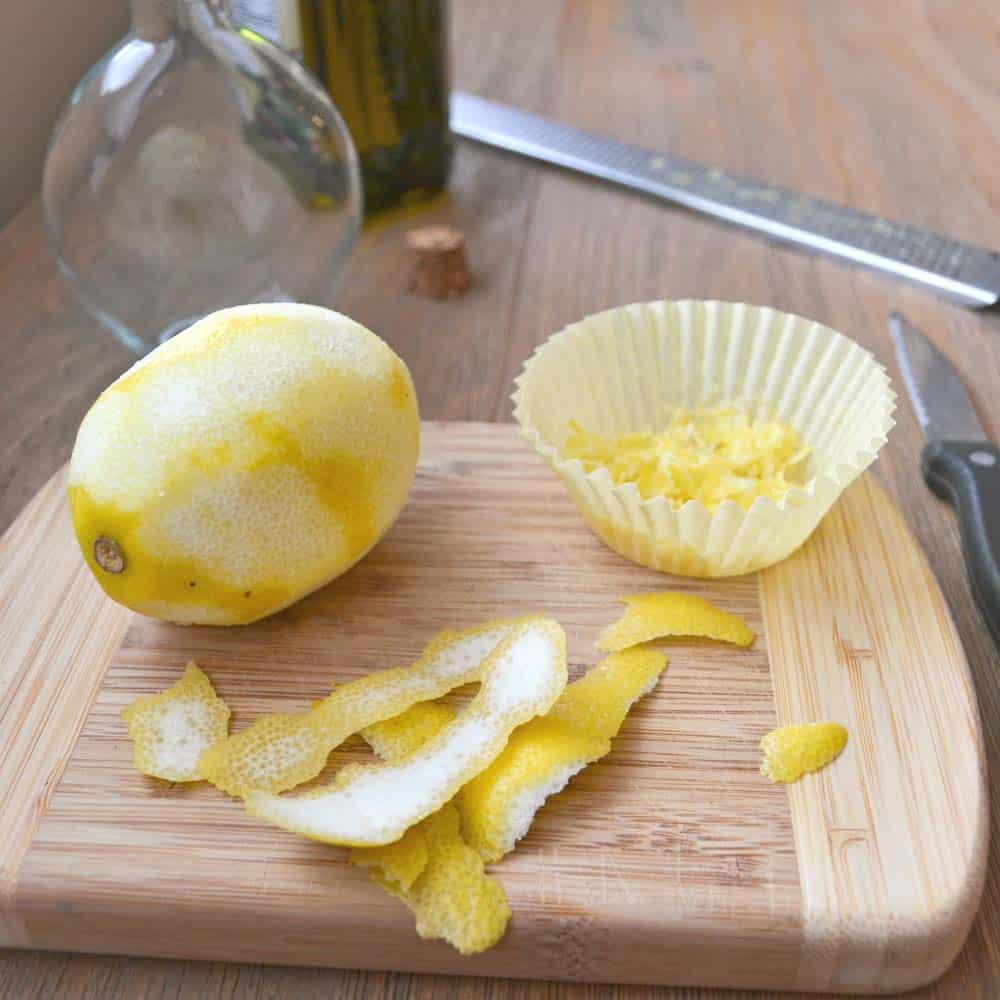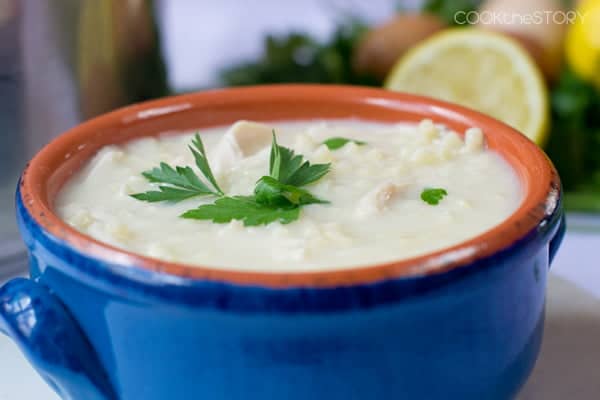While we use the juice from a lemon most often, the peel has a ton of flavor too. Here’s how to use lemon zest so none of that delicious citrus gets wasted.
I really hate wasting lemons. A lemon is such a bright and cheery thing. The thought of all that sunshine going to waste makes me sad.

Get The Most Out Of Your Lemons
Lemons have two useful parts when it comes to cooking and baking: the juice and the rind or zest. Very often I only need the juice. It breaks my heart to squeeze out the juice and then see that unused daffodil of peel peeking out of the garbage can. And so I make sure that never happens.
Before cutting a lemon, I always harvest its rind (except if the lemon is going into someone’s drink. Can you imaging being served a refreshing beverage with a peel-less wedge of lemon floating in it?). Make sure to thoroughly wash and dry the lemon first. Then, I either grate it up on a microplane grater or I use a paring knife to remove long wisps (being careful not to take the white pith along with the zest). Then I can juice the lemon and not worry about the white husk that is thrown away.
How To Preserve Lemon Zest
Now, if you’re like me and you use A LOT of lemons, then you will quickly find yourself swimming in rind. What to do with it all? I preserve the lemon rind in several different ways:
- I put the finely grated zest in a bag in the freezer. This can be used in any recipe that calls for lemon zest. Just let it defrost for a moment or two on the counter before adding it to anything so that it will spread around better and not be a frozen clump. Uses for the frozen zest: Throw a bit into white cake batter (or even chocolate cake batter), muffins, cookies, breads, and veggie dips for an extra zing of flavor. I also like to mix it with the tea leaves in my tea ball.
- I scoop the larger rind cuttings from one lemon into a cup of sugar in a sealed jar. After a few days the sugar starts to take on some lemony notes which it then passes on to anything it sweetens.
- Use strips of lemon peel and candy them by boiling them in water and sugar. Get step by step instructions over at Splendid Table. It’s tasty and works beautifully to decorate cupcakes or other baked goods.
- When I have time on my hands I set the oven to 200°F, line a pan with foil, and put the longer wisps of lemon rind on the pan. After awhile, they become totally dry. I then chop them into smaller pieces and put them in a pepper mill along with some sea salt and black peppercorns. Homemade Lemon Pepper!
- I warm the long pieces of zest from one lemon over low heat in a small saucepan with 1/3 cup of olive oil. Once everything is nice and warm I remove it from the heat and let the oil steep. I usually cover it and leave it steeping overnight. Then I strain the oil into a container with a tight-fitting lid. This oil is lovely drizzled into soups just before serving or as the oil used to lightly pan-fry fish. It’s also pretty spectacular drizzled over roasted asparagus.

More Uses For Lemon Zest
There’s so many great uses for lemon zest, you’ll regret ever tossing it before. Add it to the breadcrumb coating for your meat. Stir some into your homemade salad dressing or vinaigrette for a burst of freshness. Finish your favorite roasted or steamed veggies with a sprinkling of zest. Yum!
Now that you’ve read all my lemon zest ideas I bet your mouth is watering. Well, I have some more inspiration for you. Try this simple Lemon Zest Pasta. It’s amazing! And yes, the zest from your freezer will work beautifully here!
This post originally appeared in August 2012 and was revised and republished in July 2020.

























I am a zestoholic. I wanted to add a use for zest that I use daily. I find it hard to enjoy drinking water sometimes, so I add citrus zest to a glass of ice cold water with a squeeze of citrus juice, a tiny, very minimal dash of salt. Its a great refreshing anytime of the year drink. And its so healthy. Win win.
Thanks for sharing with us, Sara! Yum!